-
Laser uranium enrichment technology may create new nuclear proliferation risks
A new laser-based uranium enrichment technology is based on a new uranium separation concept, which relies on the selective laser excitation and condensation repression of uranium-235 in a gas. Experts worry that this new enrichment technology may provide a hard-to-detect pathway to nuclear weapons production.
-
-
Scanners more rapidly and accurately identify radioactive materials at U.S. borders, events
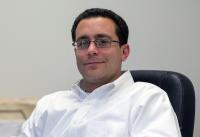
Among the responses to the 9/11 terrorist attacks, DHS, among other things, has increased screening of cargo coming into the country. At MIT, the terrorist attacks gave rise to a company dedicated to helping DHS — and, ultimately, other governments and organizations worldwide — better detect nuclear and other threats at borders and seaports. Today, Passport — co-founded in 2002 by MIT physics professor emeritus William Bertozzi — has two commercial scanners: the cargo scanner, a facility used at borders and seaports; and a wireless radiation-monitoring system used at, for example, public events.
-
-
U.S. court asked to block restart of aging, damaged Indian Point nuclear reactor
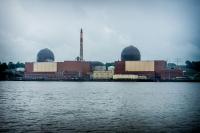
Friends of the Earth and other environmental organizations have filed an emergency petition with the United States Court of Appeals for the District of Columbia Circuit asking that the court compel the Nuclear Regulatory Commission to prevent Entergy from restarting an aging Indian Point nuclear reactor which was found to have unprecedented parts failure in its critical core cooling system. Entergy, the owner and operator of Indian Point, has repeatedly stated that it intends to start the reactor within days. The Indian Point reactors’ licenses expired in 2013 and 2015, respectively, and the plant is operating beyond its 40-year life span while the NRC considers whether to extend the license for an additional twenty years.
-
-
New material promise to make nuclear fuel recycling cheaper, cleaner
Researchers are investigating a new material that might help in nuclear fuel recycling and waste reduction by capturing certain gases released during reprocessing. Conventional technologies to remove these radioactive gases operate at extremely low, energy-intensive temperatures. By working at ambient temperature, the new material has the potential to save energy, make reprocessing cleaner and less expensive. The reclaimed materials can also be reused commercially.
-
-
Testing NYC subway biodefenses

Researchers took to the New York City subway system 9-13 May to study how a surrogate for a biological agent, such as anthrax, might disperse throughout the nation’s largest rapid transit system as a result of a terrorist attack or an accidental release. The study is part of a five-year DHS project called Underground Transport Restoration (UTR) and was conducted in accordance with the National Environmental Policy Act.
-
-
Number of thyroid cancers in Belgian children rises post-Chernobyl
Thyroid cancer is usually rare among children, with less than one new case per million diagnosed each year. Exposure in Belgium to radioactive fallout from the April 1986 Chernobyl nuclear accident may have increased the incidence of thyroid cancer in those exposed as children.
-
-
New proposal seeks to focus on the fix for lead poisoning
The crisis of lead-contaminated drinking water in Flint, Michigan, continues to make headlines — but it is just the most prominent example of an “ongoing and needless tragedy of childhood lead poisoning,” says a leading expert on childhood lead poisoning prevention. The “debacle” in Flint should spur urgently needed but long-delayed action to address the continuing crisis of lead poisoning in the United States and around the world.
-
-
Pennsylvania superbug infection could mean "the end of the road" for antibiotics: Researchers
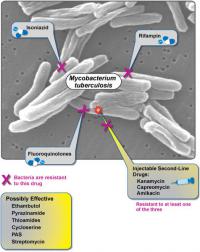
Researchers have, for the first time, found a person in the United States carrying a bacteria resistant to antibiotics of last resort. Top U.S. public health officials say this is alarming, and could mean “the end of the road” for antibiotics. Researchers say that the discovery “heralds the emergence of a truly pan-drug resistant bacteria.”
-
-
New paper filter removes viruses from water
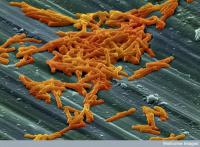
More than 748 million people around the world lack access to safe drinking water and basic sanitation. Water-borne infections are among the global causes for mortality, especially in children under age of five, and viruses are among the most notorious water-borne infectious microorganisms. They can be both extremely resistant to disinfection and difficult to remove by filtration due to their small size. Scientists have developed a simple paper sheet which can improve the quality of life for millions of people by removing resistant viruses from water.
-
-
Rapid detection of E. coli in water
Tragedies like the E. coli outbreak in Ontario’s Walkerton in May 2000 could be averted today with a new invention by researchers at York University that can detect the deadly contaminant in drinking water early. Anew technology has cut down the time taken to detect E. coli from a few days to just a couple of hours.
-
-
Speedy terahertz-based system could detect explosives
Terahertz spectroscopy, which uses the band of electromagnetic radiation between microwaves and infrared light, is a promising security technology because it can extract the spectroscopic “fingerprints” of a wide range of materials, including chemicals used in explosives. Spectroscopic system with chip-scale lasers cuts detection time from minutes to microseconds.
-
-
Fukushima’s lesson: Better real-time monitoring of spent fuel pools is a must
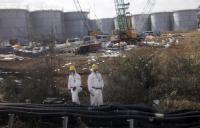
The 2011 Fukushima Daiichi nuclear accident should serve as a wake-up call to nuclear plant operators and regulators on the critical importance of measuring, maintaining, and restoring cooling in spent fuel pools during severe accidents and terrorist attacks, says a new report from the National Academies of Sciences, Engineering, and Medicine.
-
-
France to employ anti-drone technology to protect Euro 2016 soccer games
France will employ anti-drone technology to interfere with and take control of any flying machines breaching strict no-fly zones over stadiums where the games of the 2016 European Soccer Championship will be played. The technology is part of broad and unprecedented security measures taken to secure Europe’s biggest sports event. French security agencies have been training for some time for the possibility of drones used to disperse chemical agents over crowds.
-
-
Decommissioning Fukushima: Mapping boron distribution in molten debris
Decommissioning the Fukushima Daiichi Nuclear Plant just got one step closer. Japanese researchers have mapped the distribution of boron compounds in a model control rod, paving the way for determining re-criticality risk within the reactor.
-
-
Assad's forces use sarin gas for first time since 2013 killing of 1,400 civilians
The Assad regime has used sarin gas for the first time since 2013, dropping a sarin-filled bombs on ISIS fighters outside Damascus, a senior Israeli official has said. On 21 August 2013 the Syrian military used sarin and VX to kill 1,400 Sunni civilians in a rebel-held suburb of Damascus. In the wake of the attack, Russia and the United States pressured Assad to give up his chemical weapons arsenal and dismantle Syria’s chemical weapons manufacturing capabilities. Western intelligence services say that Assad likely disposed of his mustard and VX, in accordance with the deal, but that he chose to keep the sarin, the most lethal agent at his disposal.
-
More headlines
The long view
Keeping the Lights on with Nuclear Waste: Radiochemistry Transforms Nuclear Waste into Strategic Materials
How UNLV radiochemistry is pioneering the future of energy in the Southwest by salvaging strategic materials from nuclear dumps –and making it safe.
Model Predicts Long-Term Effects of Nuclear Waste on Underground Disposal Systems
The simulations matched results from an underground lab experiment in Switzerland, suggesting modeling could be used to validate the safety of nuclear disposal sites.
